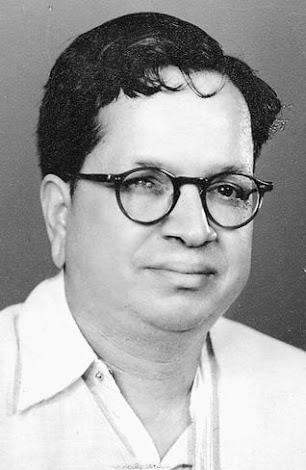Praising the Lord through song is a practice common across cultures. Tyagaraja in his Kriti koluvamare kadA in tODi talks about the various ways in which he has been fortunate enough to worship Rama. Singing HIS praises is one such way; one that is not available to most devotees.
Much as Tyagaraja has stressed elsewhere that knowledge of music or singing well but without devotion is meaningless (e.g., sangita jnAnamu bhakti vinA in dhanyAsi), he is quite vocal in several of his other compositions about the need for music to be, well, musical.
In the first line of the first charanam of koluvamare kadA, Tyagaraja says
vEkuva jAmuna velayucu tambura cEkoni guNamula celuvonDa pADucu
Which is commonly translated as
Early in the morning (well before sunrise), holding a tambura, singing lovingly in praise (of Rama)
Merely holding a tambura in and of itself is pointless, unless the voice is completely aligned with the Sruti of the tambura. I’m no maven of Telugu, but I humbly submit the saint must have meant more than physically holding the tambura when he said “tambUrA cekoni”. I’m reasonably certain he meant “in unison with the tambura”, as in voice perfectly aligned with the Sruti. An old saying I learnt as a child from my mother goes Sruti mAtA layam pitA (Pitch the mother and rhythm the father together create good music)
The first name most Carnatic rasikas and musicians would give as an example of perfect Sruti would be the late Madurai Mani Iyer. Mani Iyer’s Sruti shuddham was and continues to be the gold standard for Carnatic vocalists. To hear him align with the Pa or upper Sa in his uniquely quaint vocalisation before he launches into an alapana or the song is a calming and spiritually fulfilling experience by itself.
One morning, a story goes, the Paramacharya of Kanchi came unannounced to Mani Iyer’s house. When everyone including Mani Iyer was scrambling around to welcome the saint with prescribed rituals, the Paramacharya merely asked Mani Iyer to sing and said for Mani Iyer, his music was all the ritual he needed to follow. Everything else was superfluous.
Another dimension that is almost always associated with Madurai Mani Iyer’s music is sweetness, the way he lovingly caressed words and notes. An aspect that made experts pun his name as “Madhura” Mani Iyer, or “Sweet” Mani Iyer. He embodied not only tambUrA cekoni, but also celuvonDa pADucu (singing lovingly, or with sweetness) in equal part. Something that attracted lay listeners as much as it impressed more serious rasikas. Stories are told of how the four streets around Kapalisvara temple in Mylapore would come to a standstill when Mani Iyer was singing because no one, including the rickshaw pullers, wanted to move away.
tODi was the ultimate raga for Mani Iyer. Legend has it that when violin maestro Sri T N Krishnan pleaded the case that Mani Iyer’s disciple and nephew Sri T V Sankaranarayanan be allowed to perform in public, Mani Iyer wanted a full concert performed with only himself as the audience, to satisfy himself that TVS was indeed ready to “fly solo”. And what was the acid test? “Sing tODi!”, commanded the master.
Let us now hear the master sing a brilliant alapana in this grandest of ragas, followed by this same Kriti of Tyagaraja (koluvamare kadA) and elaborate neraval at tambUrA cekoni, followed by his trademark lilting swara prasthara. Of course, don’t miss the perfection with which he settles into the upper Sa before starting the Pallavi! In short, a rendition that in letter and spirit captures the essence of Mani Iyer’s musical persona…
Full recoding of koluvamare kadA: https://youtu.be/gqdw5hONs1o
Merging with the tambura: https://youtube.com/clip/UgkxSXZtazYKijda-DtQSvAD_44tLAfTKjdQ
Commencing neraval: https://www.youtube.com/watch?v=gqdw5hONs1o&t=1216s
Commencing swara prasthara: https://www.youtube.com/watch?v=gqdw5hONs1o&t=2148s
Many musicians say that alignment with the tambura is a deeply spiritual experience and perfect unison is a rarity, to be treasured. To draw an analogy with different stages of unison of souls (jIvAtmA) with the Lord (paramAtmA), the relationship of the voice with the tambura can be categorised in increasing order of aspiration as
sAlokyam: voice roughly in the ballpark of the tambura. “Holding the tambura” would be in this category;
sAmIpyam: voice very close to drone of the tambura, occasionally straying around;
sArUpyam: voice sounding like the tambura drone; and finally
sAyujyam: perfect, indistinguishable unison between the Sruti of the voice and the tambura
Only a precious few are blessed to be at this last level. Ganakaladhara Madurai Mani Iyer was, and still is, THE anthropomorphization of tambura cEkoni guNamula celuvonda pADucu!
Pic courtesy: www.maduraimaniaiyer.org

No comments:
Post a Comment